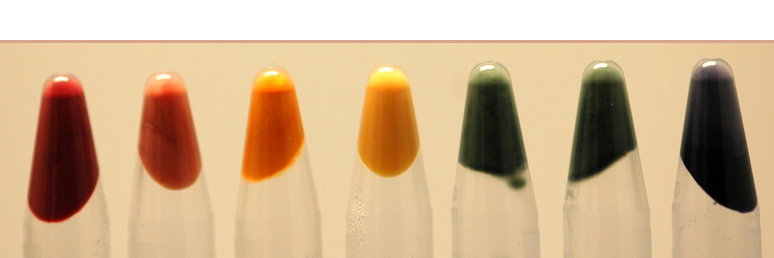The cell wall is extremely important for bacteria, as it allows them to maintain their
existence as a single celled organism, and protects them from the harsh conditions of the outside world.
Most bacteria cannot survive without a cell wall; which is why it's such a great target for antibiotics. And as the cell wall is constantly being recycled, disrupting the process to create new cell wall is as good as destroying whats already there.
Bacterial cell walls are made of strands of
glycopeptide (shown below, picture from
Kimball's biology pages)
crosslinked together to form a
mesh, which provides a strong support around the cell. There's a whole pathway of enzymes involved in creating the structure, and blocking them, or preventing them from working efficiently, is a quick and easy way of killing off
bacteria.
This is the strategy used by
Methicillin, an antibiotic that used to be talked about a lot a while ago (it's the 'M' in
MRSA) but has been neglected by the media lately in favour of swine-flu and other viruses.
Methicillin is a B-
lactam antibiotic, which means that it binds to one of the enzymes involved in cell wall metabolism, blocking its active site. More specifically, it binds to the enzyme that creates the cross-links between the
glycopeptides (PBP2). No new cell wall can be created, and therefore no more bacteria.
Resistance to this takes several forms.
MRSA simply uses a
variant of the enzyme, with a deeper active site, so that while the cell-wall precursor substrate can bind, the antibiotic cannot. Protection from a wide variety of different B-
lactams can be achieved by B-
lactamases, bacterial enzymes which break down the antibiotics. Multi-
efflux pumps also exist, these are proteins that span the bacterial cell wall and essentially pump out any antibiotics that make their way into the cell before they can cause any harm.
Vancomycin is the drug that is still most commonly used against
MRSA, although some resistance is (as always) beginning to arise. Unlike
methicillin,
vancomycin does not bind to any bacterial enzymes, instead it binds directly to the cell wall precursors. The part it binds to is shown below, as a close up from the
earlier diagram of the cell wall:

The incredibly inexpertly added D-
ala in red at the bottom shows the precursor form of this section of the cell wall (Ala,
Glu and
Lys are the short-hand form of amino-acids, so this is just a short protein chain. The L- D- labels show what form the amino-acids are in). The
vancomycin binds to the final D-
ala-D-
ala, preventing it from being processed and halting construction of the cell wall.
Two different methods of preventing cell wall growth; one antibiotic binding to the enzyme, the other to the substrate. And both, sadly, have been defeated by resistance already. In the case of the B-
lactams, a wide variety of resistance mechanisms exist, from actively destroying the antibiotic, to pumping it out the cell, or bypassing the enzyme completely. In the case of
vancomycin, some bacteria have started producing peptide chains ending in D-
ala-D-
ser, or D-
ala-D-lac, and there have been reports of
VRSA from America.
The pathway for creating bacterial cell walls contains multiple steps, and both
methicillin and
vancomycin halt just one of these, the cross-linking of the short peptide chains near the end.
Bacitracin, another cell-wall directed antibiotic, works further upstream in the pathway. I've just been given a whole stack of papers on
bacitracin by my supervisor...so I'll probably be writing more about that in the future!







